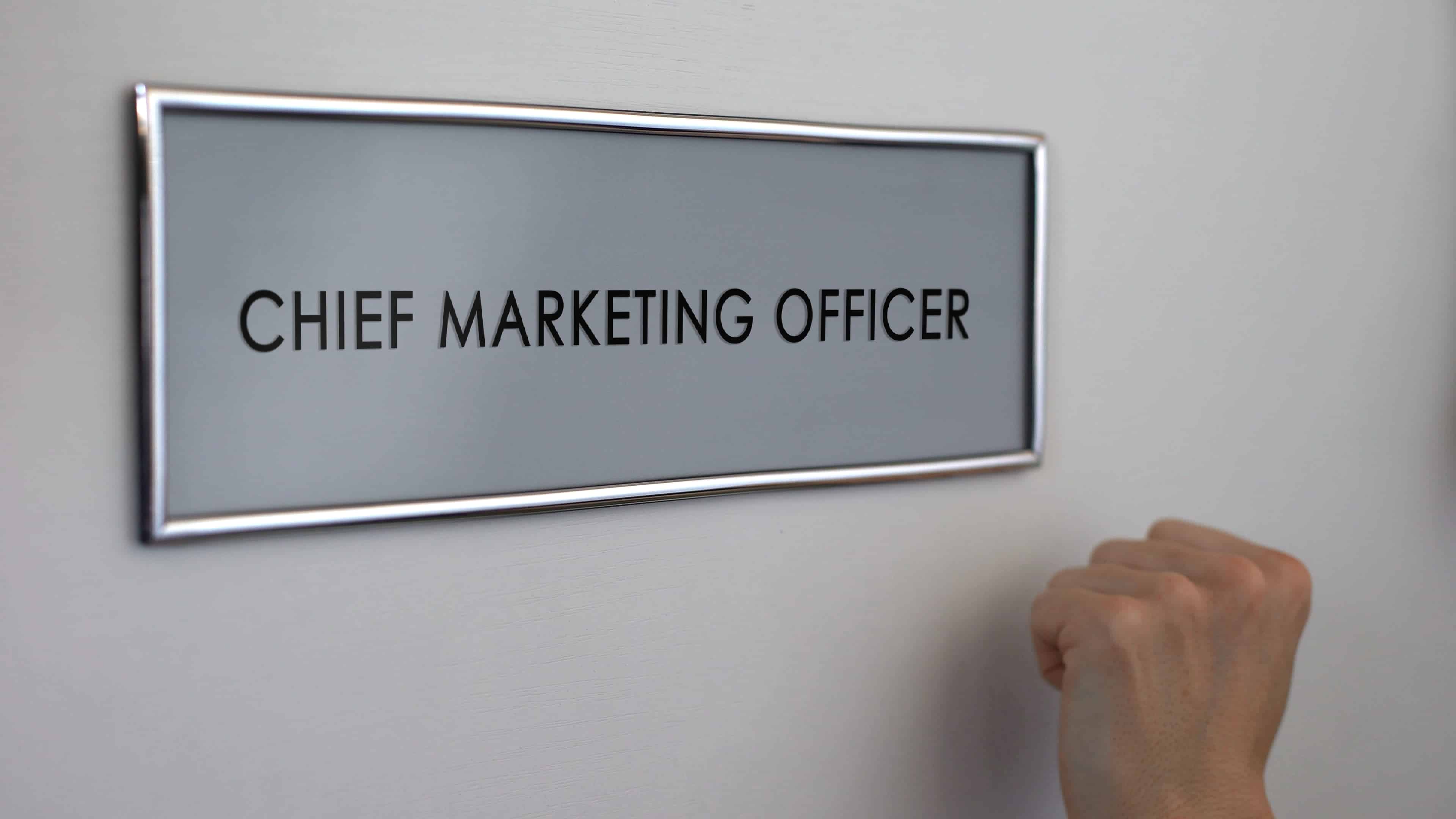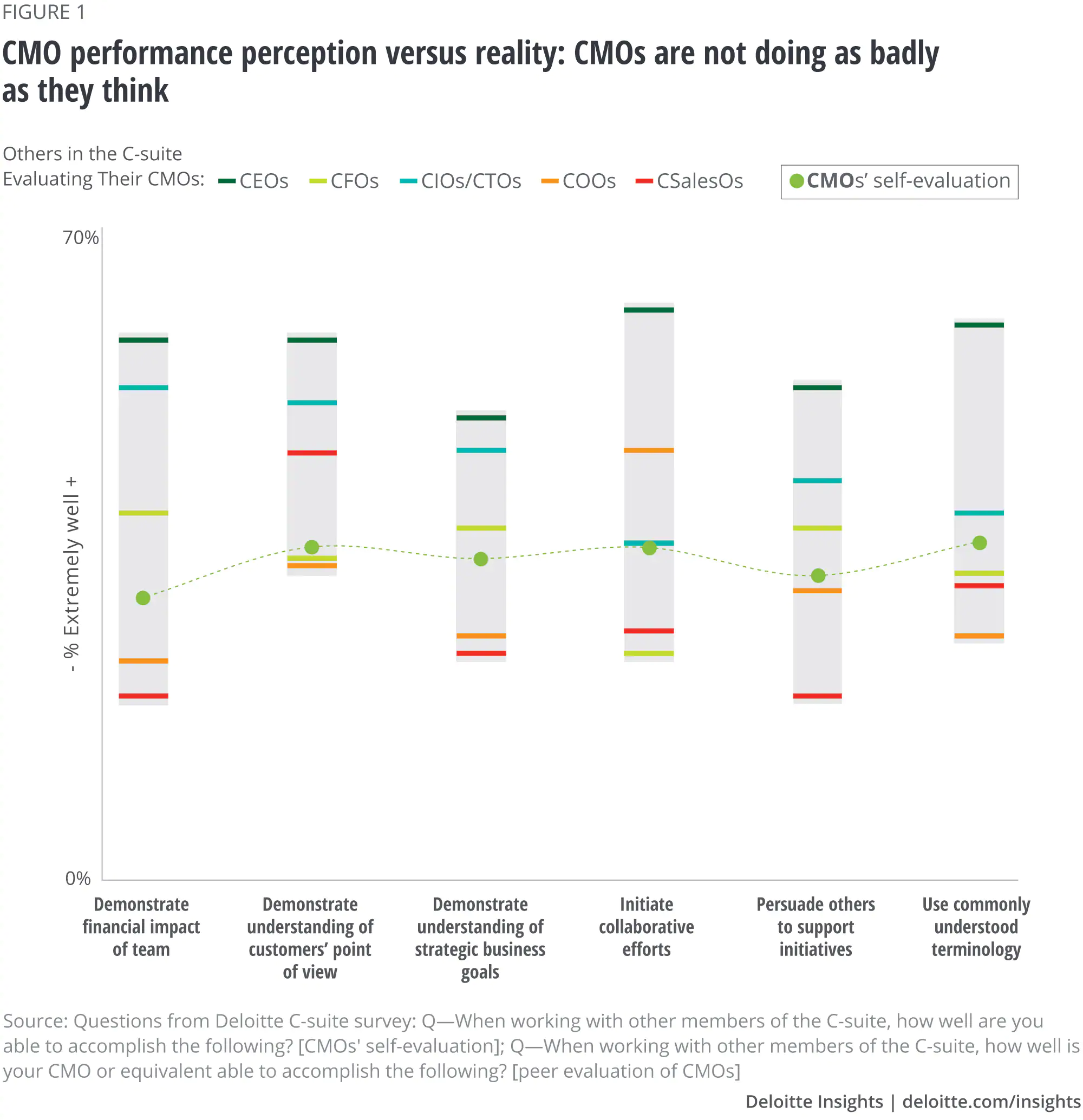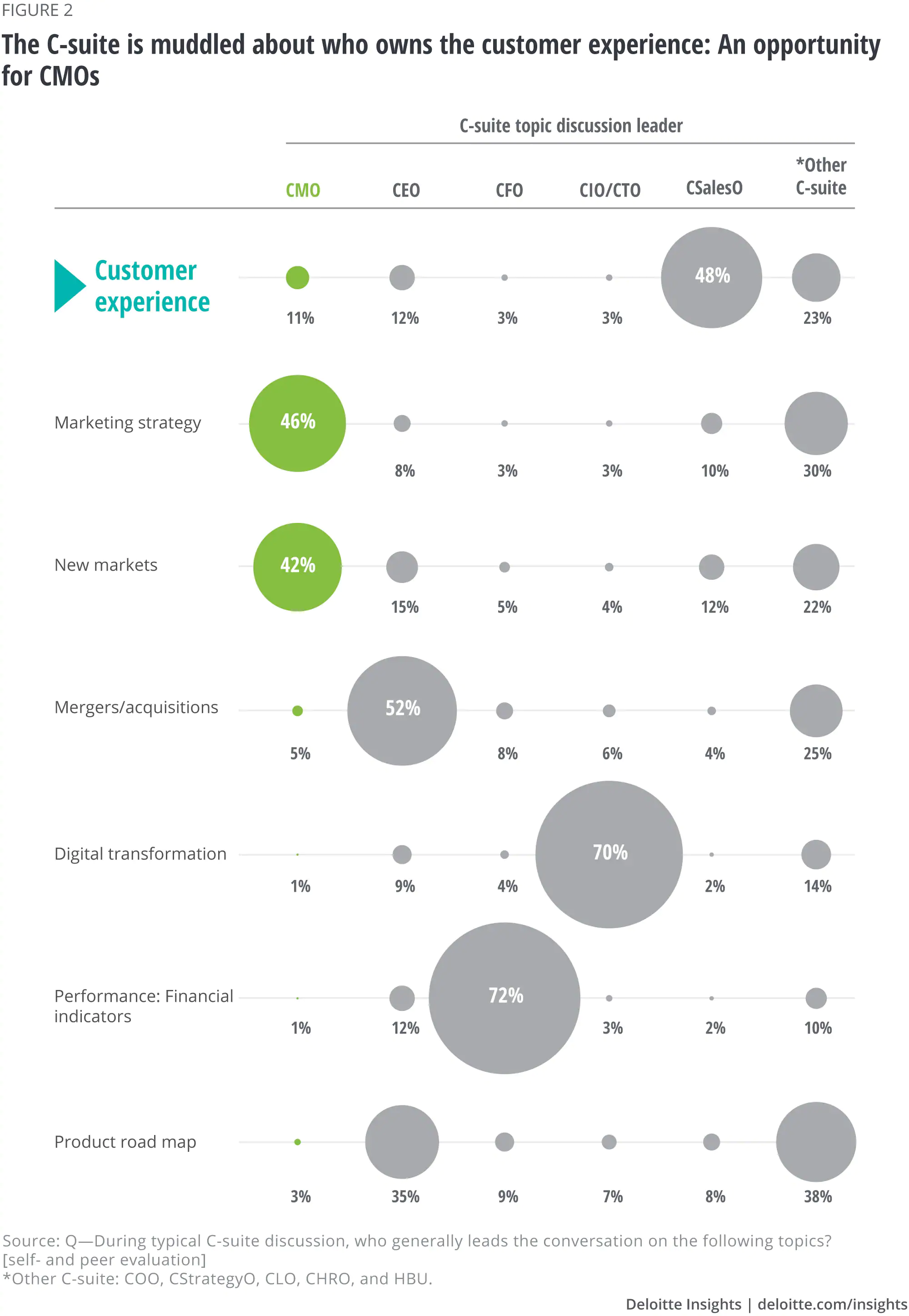
Top 3 Reasons Why You Shouldn't Hire a Full-Time Chief Marketing Officer (CMO)
You probably did not know that over 80% of CEOs do not trust their Chief Marketing Officers (CMO). Now think about all the wasted time and energy CEO's spend wondering what to do about their CMO, it can be overwhelming and a significant distraction to say the least.
What if there were another, much more comfortable option for you to consider? Well, there is, but first, here are the top reasons why you should consider holding off on hiring a CMO.
Reason #1, Hold off on hiring a CMO
It's purely a matter of return on investment (ROI), an effective CMO most certainly will bring great value to any company, but it comes at a price that most early-stage companies cant afford. Many SMB companies can get by without a Chief Marketing Executive by hiring point marketing specialists to handle marketing basics like web and digital assets, direct response, and communications.
Successful growth companies need resources to create and build an outstanding product or service that is backed up by remarkable customer experience. No amount of advertising budget or marketing genius can cover up a poorly designed (or lousy) product or service.
Reason #2, Good CMO’s are very hard to find
An effective CMO needs to maintain a unique balance between right and left-brain functional skills and needs to possess unique leadership competencies. Finding an effective Marketing Executive is very difficult, and if you are fortunate enough to find a CMO who checks all the boxes, be prepared for the investment that will follow. A CMO's $200K+ compensation package, bonus, equity, and other might seem bad enough, but it will only be a fraction of the cost compared to the marketing investment appropriation and support that they will require to attain the company's revenue growth requirements.
Remember, it's not just the compensation of the marketing executive that you have to measure; it's the marketing budget spend requirement that also needs to be measured and optimized. If companies don't have resources to fund the work of the CMO, then they should wait until they do. Another factor complicating the situation is that savvy executive marketers are wary of being set up for failure by improperly aligned expectations and resource commitment from the CEO and Board. Ensuring that expectations and resource commitments are aligned and committed sufficient to achieve and sustain the revenue growth targets will be a critical hurdle prospective CMO's will want to verify.
Experience of the Past
It's easy to point to dozens of examples of companies that have driven exponential growth over a short period of time thru providing an outstanding product or quality of service, coupled with grit, determination, and hard work. In addition to offering excellent products and services, successful companies are effective at optimizing prospecting activities and are relentless at getting referred by the prospective and current customers as their primary source of lead generation. This growth recipe of references and getting referred has been leveraged successfully by thousands of companies for many decades.
Reason #3, CMO’s don’t last
On top of the rest, also consider the information below from Harvard Business Review and Fournaise:
- 80% of CEO’s admit they do not trust and are not impressed by the work done by Marketing – while in comparison, 90% of the same CEO’s do trust and value the opinion and work of the CFO and CIO’s.
- 73% of the CEO’s think Marketers lack business credibility: Marketers can’t prove that they generate business growth.
- 90% of Marketers are not trained in Marketing Performance and marketing ROI, and 80% struggle with being able to adequately demonstrate to their top management the business effectiveness of their marketing spending, campaigns, and activities.
According to Korn Ferri Institute, CMO’s have the shortest life span of all C-suite executives somewhere in the three-year range, which is significantly shorter than other C-suite executives. Interestingly the average age of a CMO in the top 1000 US-based companies is early to mid-50’s, compared to the average age of CEO’s which is the mid to late ’50s.
Are CMO's Set Up to Fail?
Harvard Business Review published a report in 2017 entitled "Why CMO's Never Last" suggests that perhaps the problem with CMO longevity stems primarily from poorly defined responsibilities, expectations, and performance measures. They go to suggest further that often the CEO's expectations for there CMO's are not realistic, and that CMO's are set up to fail.
So, where does that leave us relative to where companies should invest their scarce resource dollars in optimizing their growth trajectory? The information above could suggest that perhaps companies should consider other potential options including the option of hiring fractional or part-time expert CMO services, like those offered by CMO GROW, and Chief Outsiders and others that can bring a high-level of marketing know-how and guidance to the company.
Benefits of outsourcing
Outsourced marketing executives can bring many benefits to an organization in the following ways:
- Part-time Chief Marketing Officers (CMO) represent the fastest way to grow your company, the lowest cost, and the lowest risk. Part-time CMO's are driven to demonstrate immediate and continual results, and they understand that if they don't, they will (and should) be terminated. Part-time or fractional CMO's are not like lawyers, and at least for CMO GROW CMO's, we will excuse ourselves if, in the "unlikely event," we are not driving real revenue growth.
- Experienced outsourced marketing executives can quickly spot trends, gaps, and holes in company sales and marketing strategies and will bring years of experience in "actually growing businesses." This growth experience and perspective provide enormous value to bring focus and effort to the highest ROI marketing activities.
- Executive outsourcing is much more effective and more economically viable, then hiring an agency or in-house executive. Companies like CMO GROW can quickly assemble a group of their colleagues to brainstorm and workshop growth challenges of their clients. CMO GROW clients benefit from the collective whole and strength of its executive
- Demand for competent and experienced and Chief Sales and Marketing executives is high, finding and winning the "recruiting game" can seem like "Mission Impossible" and if you do happen to find the right-fit candidate, a competitive compensation package will be required. An outsourced CMO costs a fraction of the hiring price and allows you to invest in profitable growth programs rather than high salaries and compensation packages.
- Forward-thinking companies understand that an outsourced CMO (for hire) is an innovative and sustainable alternative and competitive advantage. Business growth and success are tied to creating and executing effective growth plans. Successful companies are intentional in planning and implementing their strategies.
Why Companies Fail
Growth companies need to understand and audit risk factors associated with their business model. CB Insights recently publish research prioritizing the "Top 20 Reasons Companies Fail", these mistakes can be avoided with a cautious approach and a willingness to confront the brutal facts. Companies need an outsider who will audit and provide frank and real feedback. Companies like CMO GROW, Chief Outsiders, and others are well equipped to handle this punch list of items, and they can function in many ways, as a part-time member of the executive staff, or in an advisory role, similar to the way board members advise and guide companies.
Once a company has checked the boxes and pass the audit, they need to get revenue flowing as soon as possible. Revenue is the oxygen that determines their wellness and growth potential. At this point, companies need hard-charging sales and business development resources to convert opportunities. And if they haven't already, they need to get busy building their digital strategy and integrated multichannel programs and campaigns. While these tasks are critical and can be challenging, they don't require a seasoned or expensive, full-time CMO.
Conclusion
Timing plays a vital role in business, getting the right C-suite executives into the proper function at a company (especially CMO) at the correct inflection point of its life-cycle, whether as a new hire or through the new fractional or part-time model can be game-changing.
The critical performance results, ultimately revenue, for the CEO, the shareholders, and the customers will determine your future success. For me, helping clients think through the effect and impact of alignment with marketing, sales, and operations within their organization is most satisfying, and the primary reason I founded CMO GROW.

According to Deloitte Consulting, Many CMOs struggle to find a voice at the C-suite table. How can they elevate their influence and fully realize the role’s potential?
CMOs suffer from a crisis of confidence
CMOs are poised to wield considerable influence in the C-suite—and across their entire organizations. As digital technologies have changed the face of marketing—from creating innovative ways to connect with consumers to provide a wealth of customer data across every touchpoint—the role of the CMO has been significantly elevated.
Once largely responsible for brand and marketing campaign activity, CMOs today help drive customer experience and harness data-driven insights that can shape corporate strategy and impact financial performance. CEOs and other C-suite executives now expect CMOs to demonstrate how marketing drives growth and contribute to strategic business discussions. Yet, despite the elevation of the role and expectations of their C-suite peers, many CMOs face a crisis of confidence that is impairing their ability to fully engage with the C-suite and have a voice at the executive table, according to new Deloitte research.
The research, based on a survey and in-depth interviews with 575 Fortune 500 executives across the C-suite, examines how C-suite executives view CMOs’ contribution to corporate decision-making, why CMOs struggle to find their voice in the strategic conversations, and how they can achieve their place as enterprise-wide strategic leaders.
One of the most striking findings from the research is that CMOs are the least confident members of the C-suite—a harsh assessment they give themselves. Only 5 percent of CMOs in the study consider themselves high performers in their ability to impact strategic decision-making, contribute to the overall direction of the business, and garner support among their peers for their initiatives. Compare this with 55 percent of CEOs who consider themselves high performers. This lack of confidence may be more perception than reality, however. While CMOs’ self-reported assessment is quite low, most C-suite members think their CMO is performing at a higher level than they see themselves.


Based on the research, CMOs can consider three recommendations to help break the low confidence cycle and increase their influence in the C-suite:
1. Give yourself permission: CEOs give CMOs the highest marks for performance among all C-suite peers assessing the CMO. To boost their self-confidence, CMOs should give themselves permission to ask questions, get involved outside their traditional scope, and actively contribute to conversations with peers.
2. Lead the customer experience conversation: CMOs are not seen as leading the customer experience conversation; only 11 percent of C-suite executives perceive the CMO as leading the conversation, while 48 percent see the chief sales officer (CSO) in that role. CMOs should become the C-suite’s go-to person on customer experience, even if direct responsibility may lie in other areas of the organization.
3. Be the first to connect: CMOs are missing opportunities for cross-functional collaboration in the C-suite. Only 17 percent of C-suite execs report having collaborated with CMOs over the past 12 months, while 47 percent report having collaborated with COOs during this time period. CMOs can build confidence to speak up in the C-suite by connecting and collaborating with their C-suite peers.
These findings point to significant opportunities for CMOs to more clearly define their role as customer experience champion, forge closer relationships with other C-suite executives, and take more risks as leaders. Rather than waiting for others to define their role—or playing it safe sticking to familiar roles—CMOs should embrace the opportunity for growth and be brave about stepping into unfamiliar territory. By doing so, CMOs can gain more confidence and take their rightful place as strategic leaders in the C-suite.
Management Versus Leadership – If One Wins, Everybody Loses!
Management (even flawless management) without leadership is doomed to fail and so called "leadership" without management and precise execution is a hobby, not a business.
I meet often with business leaders and executives and the conversation is generally about organizational or individual performance. Specifically, how can I help them improve the management and leadership of their marketing and sales teams which may be underperforming?
These conversations have caused me to think about the topic of leadership versus management and the nature of both. For whatever reason, we often think of these things in different buckets. "I have a great sales manager but what I need is a great leader" or "My leader is strong but doesn't have a good handle on the details of the day to day business".
Great leadership and effective management are not separate and distinct, and you don't have to choose one at the exclusion of the other. My view is that they are integrated and necessary components of a cohesive and high functioning team.
Let me explain through a simple analogy
A few years ago, one of our daughters wanted to learn to play the cello. She joined the orchestra in her school and took private instruction. After the initial, painful beginning, she began to get the hang of it, and we were impressed at her progress. We were excited about her first orchestra performance. We had only seen her play individually until that point and while we were impressed at the skills she had developed, did not see them in the context of her peers. More importantly, we had not yet seen them in concert with her peers. While individually, many of the students performed their individual roles well enough, they had significant room for improvement as a team! They were well managed but not yet well led.
This changed over time and it became a true pleasure to watch her perform as part of a large, synchronized group. I learned to appreciate the vital role of her teacher/conductor in this development who was both a manager and a leader.
The teacher managed the development of each student and focused on individual, functional goals and improvement with direct feedback, clear instruction, and expectation setting. She went deep and was in the details of the mechanics of playing each instrument with each student. As a leader, she had to elevate and take a different perspective of the situation, focusing on how she would be able to achieve the best collective outcome from the group. Because she had a handle on the details, she could make strategic decisions with effectiveness and clarity and make the best decisions on the tradeoffs which would allow for the most productive outcome for the orchestra. She also set clear objectives for the group and held them accountable.
Being a manager is focusing on the "what" and "how", being a leader is focusing on the "why" and "when". For any team to reach their maximum potential, it is critical to have both effective management and leadership of the team. Without a clear sense of purpose, shared vision & values and a good understanding of the competitive landscape and clear definition of success, teams will be low functioning and toxic. Without the ability to effectively manage the "how" and "what" that support the strategic initiatives, the team may have great intentions, enjoy working together and still ultimately fail. You CANNOT be a great leader if you are not a great manager.
Leadership Lessons
Below are five areas I work with leadership teams on as a gauge to see how their teams are functioning as well as the effectiveness of their executive leadership:
- Does your entire organization know and understand the "elevator pitch"? Are they comfortable sharing it? Every employee should be an evangelist, every day, in every setting. There is a lot that goes into this, including company culture, etc. For employees to be effective evangelists, they should be delighted to be part of the team and know how they can win, individually and as a team.
- What are the personas for each of the audiences you are targeting and selling to? Why do they care what you have to say/share? How do you stand out from your competition?
- Are you sharing the right messages with the right prospects and customers and in the most cost-effective way? How do you know? Know the details of your business and make decisions based on reliable data.
- How is the team performing against their goals? How do they know? How visible are the goals and results to the organization? Are they properly trained and empowered? Set clear expectations and agreements and make them transparent, especially those of the leadership team.
- What are the consequences of meeting or missing goals? How consistently are they applied? Evaluate and deploy your resources in a way that maximizes the return for the team.
Conclusion
Like an orchestra, when viewed through the lens of management versus leadership, you may have some great individual contributors or even managers that execute their roles effectively but don't play well in a team and may cause discord, ultimately holding the team back. Or your team may lack direction, focus, and a sense of urgency and ultimately success if they are not held accountable for both individual and team execution. One cannot win at the expense of the other.
There is a lot that goes into building and leading great teams but if you are both managing and leading effectively and if you can succinctly answer the questions above you are well on your way to harmonious success. If you cannot, get yourself a great coach and facilitator to help you get it right and soon you will be amazed at the effectiveness of your marketing and sales efforts!
